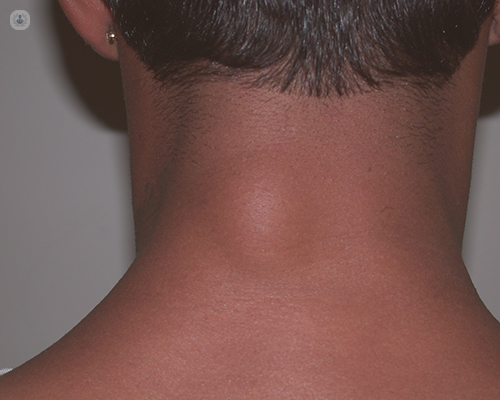

A lipoma is a benign lump that forms under the skin, usually made from fatty tissue. They usually grow slowly and are situated between the skin layer, and the muscle layer beneath.
Lipomas are more common in middle age, are usually painless, and most commonly appear on the upper back, shoulders and abdomen.

What causes a lipoma?
The cause of lipomas is unknown. It is believed that they may be genetic, so if your parents or other members of the family had lipomas, then you may also be prone to developing them. They can often appear after an injury, though the reason they form is unknown.
What are the symptoms of a lipoma?
As previously mentioned, lipomas are usually painless, though can cause some pain if they press on nearby nerves. They appear as soft, doughy lumps ranging in size from around the size of a pea to as big as a grapefruit. The lumps may move slightly if pressed.
Who is more at risk of developing lipomas?
Although people of any age can develop lipomas, they are more prevalent in adults aged between 40 and 60 years of age.
People with the following conditions are more at risk of developing one or more lipomas:
What is the treatment for lipomas?
Lipomas don’t usually cause any problems if left alone, however they can be treated if required.
The most common way of treating lipomas is to have them surgically removed. This can be done by either a dermatologist, or by a plastic surgeon.
Surgery involves making an incision to remove the fatty tissue, before suturing the opening. Though there is a risk that the lipoma may return, it is uncommon.
Another treatment option to reduce the size of the lipoma is liposuction, where a needle is used to remove some of the fat from within the lipoma.
Finally, steroid injections may be used to treat the lipoma. The steroid injection works to shrink the lipoma, though this treatment doesn’t completely remove the lipoma.
